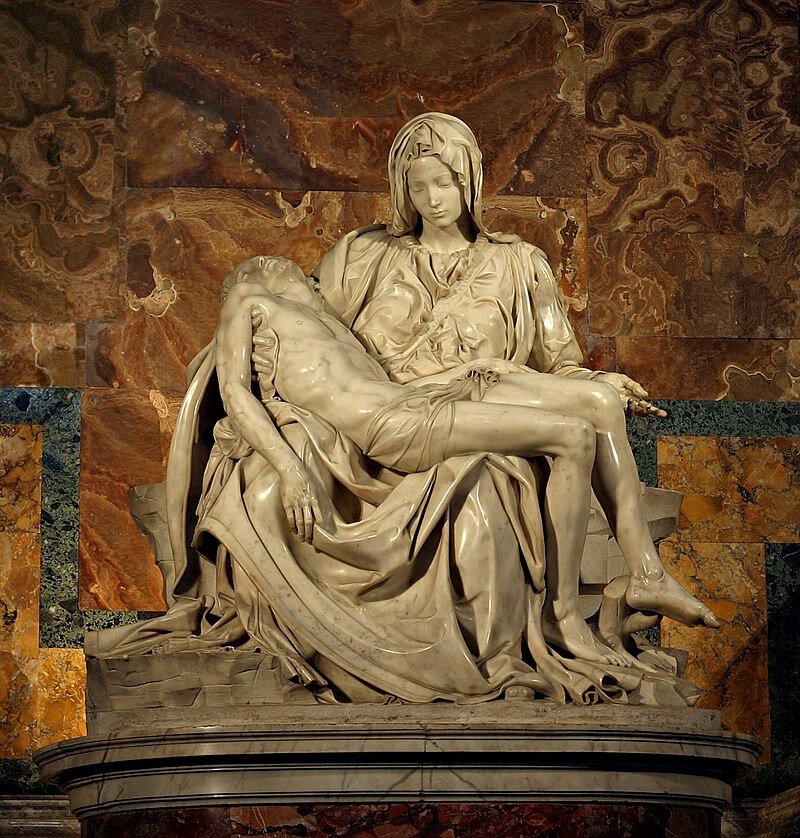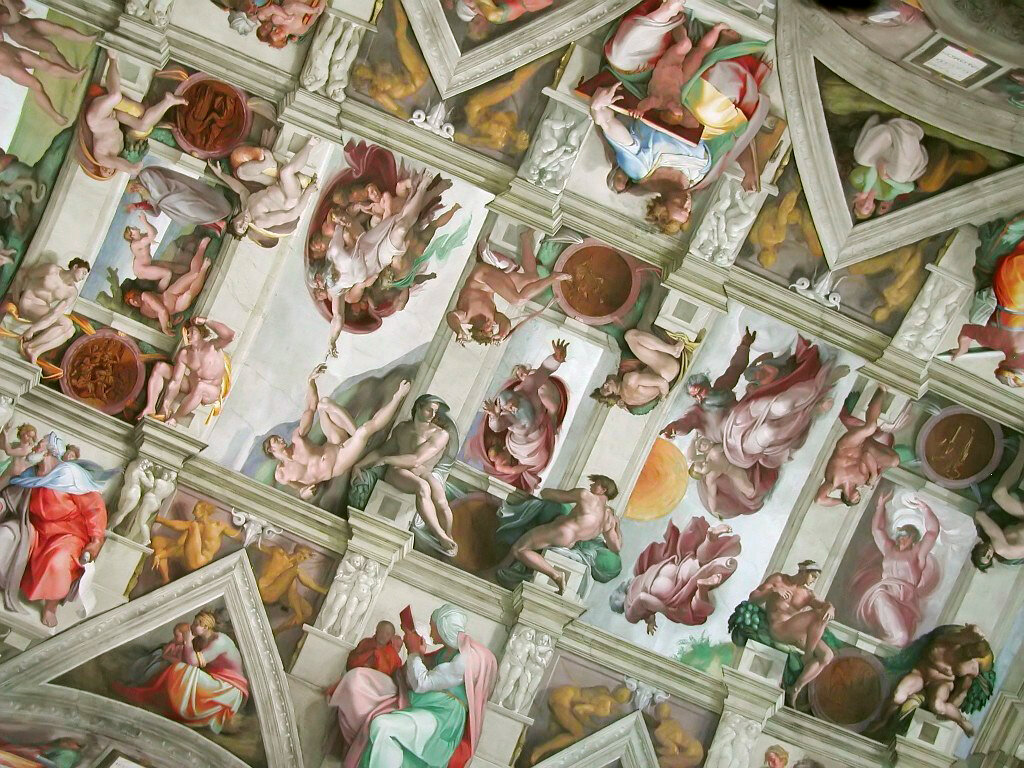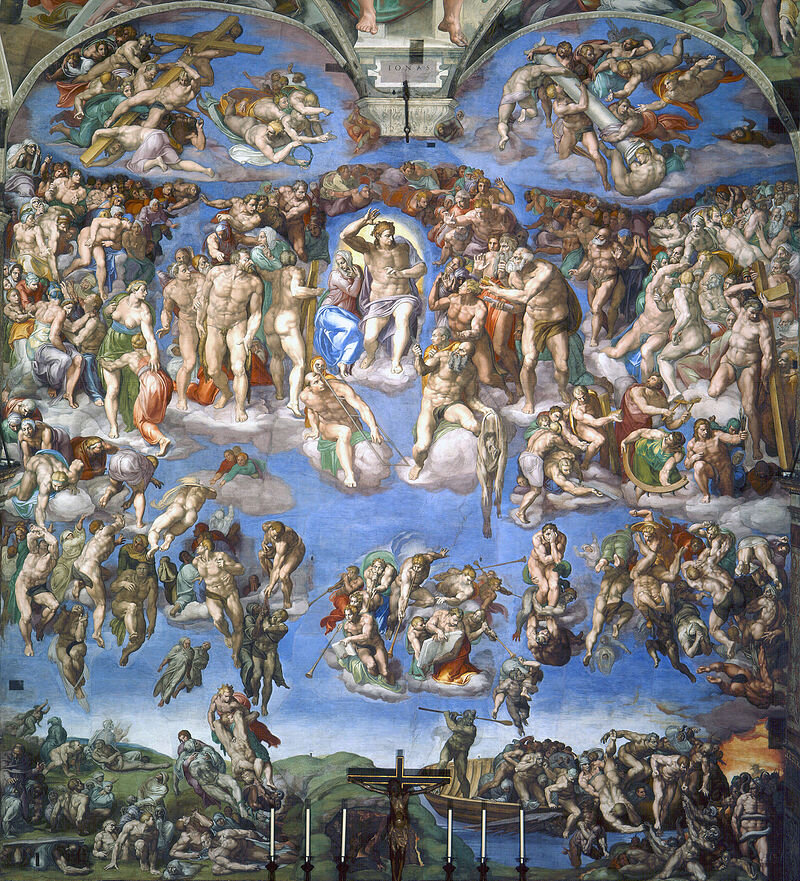Michelangelo Buonarroti is one of the most successful artists of all time. He created AT LEAST four of the most famous works of all of art in history: His Pieta, David, Sistine Ceiling, and The Last Judgement (I didn’t even mention him helping to design the dome of St. Peter’s, his Moses, Slaves, the Medici Chapels in San Lorenzo…)
For 76 years (from the age of 13 until his death at nearly 89), Michelangelo WORKED — but not at a steady job; he didn’t keep a regular shop nor a single patron. He was an entrepreneur for his age, shopping his craft to various patrons (from bankers to city governments and 9 different popes) and cobbling together a living — a VERY good living — from myriad projects. His success at this is unprecedented: his name, work, and legacy have been revered for over 500 years…
But how did he he do it? How did this notoriously headstrong artist with a terrible temper (NOT from a wealthy, connected family) become arguably the most successful entrepreneur in history? And what can YOU learn from Michelangelo’s extraordinary success?
1: Creative marketing and branding. You might not expect a list about a Renaissance artist to begin with a modern term like “branding,” but Michelangelo was perhaps the first PR expert. Through personal stories and a biography written by Ascanio Condivi (essentially the artist’s autobiography), Michelangelo wove a personal myth about a talented kid who, with no real training nor support from his family, rose to the top of his field while overcoming impossible obstacles, obstinate popes, and attacks from rivals. He wasn’t just any old artist; he was a one-of-a-kind genius touched by God. Some of his stories were true, some exaggerations, but he knew the power of a good STORY and used it to his advantage.
2. Stay true to your voice, while meeting the needs of patrons.Michelangelo gave his patrons what they wanted: His Sistine Chapel met the ecclesiastical needs of Pope Julius II; his Pieta met the spiritual needs of a French Cardinal; his tombs in the Medici Chapel met the political needs of the Medici family… BUT Michelangelo never completely bowed to their demands. When Florence hired him to carve a David, they — surely — envisioned a young shepherd boy standing triumphantly over the severed head of Goliath, not a colossal nude man staring apprehensively toward a battle not yet fought. But Michelangelo knew when to take a risk and listen to his gut because it was his artistic vision that made him who he was. Patrons hired him because he had a strong voice; and we remember him because he stayed true to his gut.
3. Focus. Michelangelo did not get distracted. He was so focused on his work he often forgot to take his boots off — for WEEKS at a time. When he finally got around to removing them, the skin of his feet came off with his boots. That’s dedication. Michelangelo did not procrastinate; he did not put off his work until tomorrow. He worked. Hard. Every day. Some might call him a workaholic, but it was an addiction Michelangelo embraced. If he had lived during the era of cell phones and internet, I have no doubt he would have turned them off — he might’ve even thrown them out a window if they got in the way of his work.
4. Play to your strengths. Two of Michelangelo’s biggest rivals were Leonardo da Vinci and Raphael, both of whom were charming and beloved with courtier good-looks and easy social graces. Michelangelo was none of those things — his nose had been broken in a childhood brawl; his bad temper was notorious (there was even a word created to describe his emotional, angry intensity: terribilità); and he was a stonecutter — considered a dirty, artisanal craft by his family and contemporaries. But Michelangelo never wasted time trying to “work on his weakness of coarse manners.” Instead, he focused on his strengths: hard work, ambition, and artistic skills. Eventually, people stopped caring about his “brutish behavior” and hired him anyway — because of his mad creative talent. (By the way, I’m not telling you to cling to bad social manners — unless you happen to have the talent of Michelangelo. I’m just suggesting you focus on what you are already good at; not try to compete with someone else on their home turf).
5. Take risks. Michelangelo rarely played it safe. He left an apprenticeship with the well-respected painter, Ghirlandaio, when he was barely two years into his training; traipsed off to Rome without any promise of work; took jobs that had felled other great artists; and even though he was a self-proclaimed sculptor — NOT a painter — took a little job called frescoing the Sistine Ceiling (That risk became one of the most famous pieces of art in all of history and secured him “master” status for the rest of his life). “Safe” is fine — but no one will remember “safe.” No one pays good money for “safe.” People pay good money for brilliance — and Michelangelo gave the world plenty of that.
6. Aim higher than everyone else. A quote famously attributed to Michelangelo: “The greater danger for most of us lies not in setting our aim too high and falling short, but setting our aim too low and achieving our mark.” This is how Michelangelo approached the world. Others said the botched Duccio Stone was too difficult to carve; he carved the David out of it. When the Sistine Chapel started to mold, he didn’t give up; instead, he improved his design. When he was just 21 years old — before he’d carved anything of note — he promised IN WRITING in the contract for the Pieta to carve “the most beautiful work in marble that Rome has ever seen.” He didn’t just say he would carve a statue to the best of his ability considering the time and money constraints. He said he would carve the most beautiful sculpture in Rome. Then he did it. Aim high. You MIGHT just hit your mark.
7. Have a purpose. Michelangelo did not create art for himself — he created art for something larger than himself. For him, it was for the glory of God and the Catholic Church; that gave him the strength and determination to push himself harder than anyone else. You will never be remembered — or a success — if you are only working toward YOUR goals or for YOUR money. You must be working toward something larger than yourself; only such a mission can give you the drive to succeed despite any obstacle.
Invite the Author to Speak
Want Stephanie Storey to talk to your group or business about how to succeed like Michelangelo? Invite her to speak to your organization.





